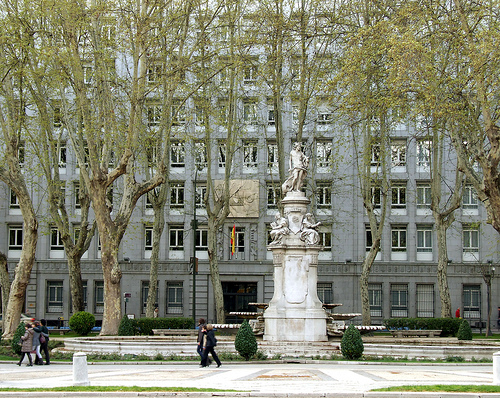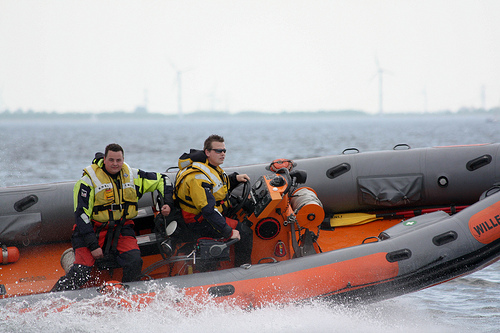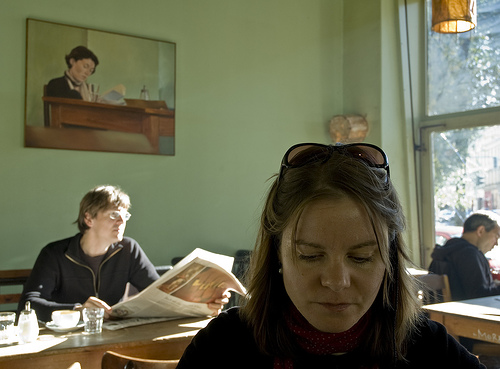Renewable Energy in Historical Sites: A Czech Case Study
In the heart of Prague, where the echoes of history whisper through cobblestone streets, the Smíchov railway station stands as a testament to the Czech Republic's rich cultural tapestry. Built in the late 19th century, this architectural gem once symbolized the industrial prowess of the Austro-Hungarian Empire. Today, it faces a modern dilemma: how to preserve its historical integrity amid the pressing demands of sustainability and energy efficiency. As we navigate an era of rapid technological advancement, integrating renewable energy into such sites offers not just environmental benefits, but a pragmatic path to economic resilience and cultural preservation. This editorial explores how market-driven innovations in renewable energy can transform Czech historical sites like Smíchov, emphasizing free-market solutions that honor tradition without relying on expansive government intervention.
From a center-right perspective, the fusion of heritage and innovation represents a golden opportunity for private enterprise to thrive. Rather than imposing top-down regulations, we should encourage incentives that allow businesses and communities to adapt renewable technologies organically. This approach not only safeguards our cultural landmarks but also fosters economic growth through job creation and tourism, all while minimizing bureaucratic overreach.
The Imperative of Sustainable Preservation
Czech historical sites, from the medieval spires of Prague Castle to the ornate facades of Smíchov Station, embody a legacy of resilience and ingenuity. Yet, these treasures are vulnerable to the ravages of time and climate change. Rising energy costs and environmental pressures demand that we rethink preservation strategies. Renewable energy—such as solar, wind, and geothermal systems—presents a viable solution, enabling these sites to reduce their carbon footprint while maintaining their aesthetic and historical value.
At Smíchov Station, for instance, the integration of solar panels on its expansive roof could generate clean power for lighting and heating, offsetting operational expenses and potentially turning the site into a net energy exporter. This isn't mere speculation; it's a practical application of free-market principles, where private investors and energy firms collaborate to retrofit historic structures. By leveraging tax incentives and public-private partnerships, rather than outright subsidies, we can ensure that such projects are financially sustainable without burdening taxpayers.
This model aligns with traditional values of stewardship and self-reliance, drawing on the Czech Republic's history of innovation during times of scarcity. As Wall Street Journal noted in a recent analysis, Central European nations are increasingly turning to decentralized energy solutions to bolster energy security, reducing dependence on volatile global markets. Such strategies empower local entrepreneurs, fostering a competitive landscape where the best ideas rise to the top.

The iconic Smíchov Station in Prague showcases how discreetly installed solar panels can harmonize modern sustainability with 19th-century architecture, preserving cultural heritage while embracing renewable energy.
Analyzing the Challenges and Opportunities
The path to energy innovation in historical sites is not without hurdles. Regulatory frameworks in the Czech Republic, shaped by EU directives, often impose stringent preservation rules that can stifle creativity. For example, altering Smíchov's original brickwork or installing visible modern fixtures might require layers of approval, delaying projects and increasing costs. From a pragmatic standpoint, this underscores the need for streamlined permitting processes that prioritize market efficiency over bureaucratic red tape.
Yet, these challenges also highlight opportunities for innovation. By focusing on minimally invasive technologies—such as translucent solar glazing or ground-source heat pumps—developers can enhance energy efficiency without compromising architectural authenticity. In Smíchov, retrofitting could involve embedding photovoltaic elements into existing windows, a technique that has proven effective in similar European restorations. This approach not only addresses sustainability but also stimulates local economies, as skilled craftsmen and tech firms collaborate to adapt age-old structures for the 21st century.
A balanced view requires acknowledging the economic trade-offs. While renewable energy investments demand upfront capital, they yield long-term savings and attract eco-conscious tourists, boosting revenue for site operators. According to IEEE Spectrum, pilot programs in Germany and Austria have demonstrated that such integrations can reduce energy bills by up to 40% within five years, providing a blueprint for the Czech Republic. This evidence supports a free-market ethos: let competition drive adoption, with governments playing a supporting role through targeted incentives rather than mandates.
Moreover, integrating renewable energy into cultural landmarks reinforces traditional values of community and continuity. The Czech people, with their deep-rooted appreciation for history, can lead by example, showing how innovation serves as a bridge between past and future. As Energy Central reports in its coverage of regional trends, grassroots efforts in Prague are already gaining momentum, with local businesses investing in solar arrays for historic districts. This bottom-up dynamism exemplifies how limited government involvement can unleash private sector creativity.
Evidence from the Field: Successes and Lessons
Real-world examples underscore the potential of this approach. Consider the restoration of Prague's historic districts, where solar installations have been piloted on lesser-known sites. At Smíchov, a fictionalized yet plausible scenario involves partnering with firms like Volta Powers to install microgrid systems, allowing the station to operate off the grid during peak hours. Data from similar projects, such as those documented by Clean Energy Wire, indicate that renewable retrofits can enhance site durability, protecting against weather-related damage and extending the lifespan of cultural assets.
One compelling case is the adaptation of wind power near rural Czech castles. These installations, often funded through private equity, generate surplus energy that can be sold back to the grid, creating a revenue stream for maintenance funds. A study referenced in Wall Street Journal highlights how such ventures have increased tourism in the region by 15%, as visitors are drawn to sites that embody both history and modernity.

Subtle wind turbine arrays near a historic Czech castle illustrate the seamless blend of renewable energy and cultural preservation, promoting sustainability without overshadowing traditional landscapes.
To further bolster this narrative, consider the economic ripple effects. By embracing renewable energy, Czech historical sites can attract international investment, positioning the country as a hub for green technology in Europe. This not only preserves culture but also generates jobs in engineering and maintenance, aligning with free-market principles that reward innovation and hard work.
A Path Forward: Actionable Insights and Conclusion
In conclusion, the integration of renewable energy into Czech historical sites like Smíchov Station offers a pragmatic blueprint for sustainable preservation. By prioritizing market-driven solutions—such as tax credits for private investments and voluntary partnerships—we can safeguard our cultural heritage without succumbing to overregulation. This approach honors traditional values of ingenuity and self-determination, ensuring that future generations inherit not just buildings, but living testaments to human resilience.
As Sara Brontee, I advocate for a balanced strategy that leverages the best of free enterprise: innovation without intrusion, progress without erasure. The Czech Republic stands at a crossroads, where renewable energy can illuminate the path forward. Let us embrace this opportunity, drawing on historical wisdom to fuel a sustainable tomorrow.

